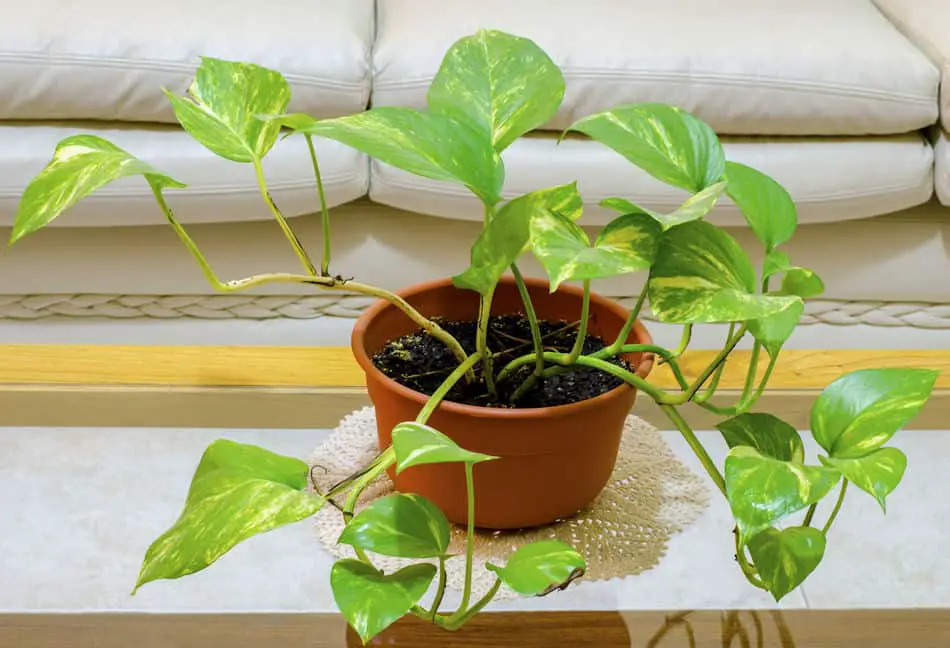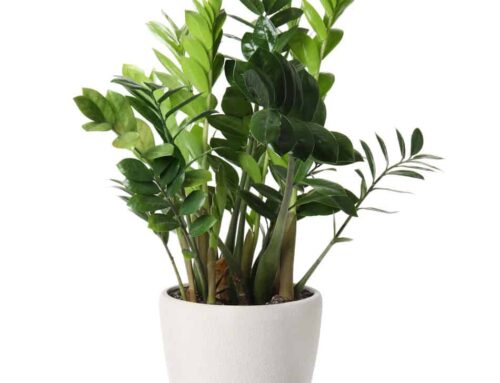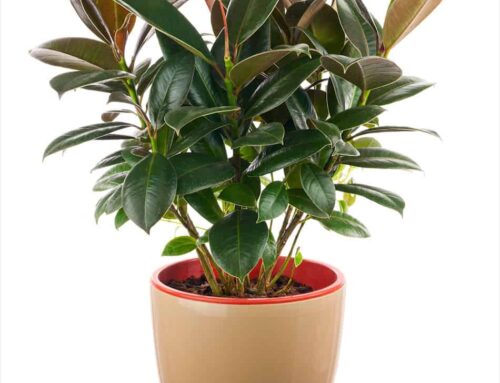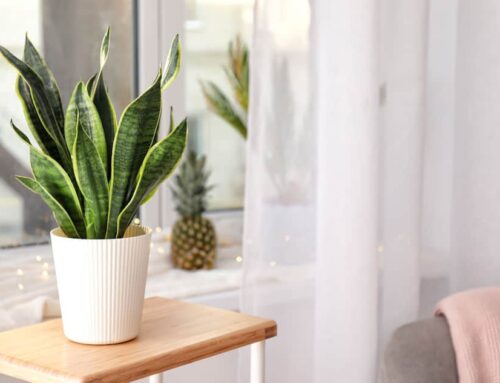If you are looking for an easy, eye-catching plant to grow that will climb your cabinets and purify your air, the pothos plant is just what you need. Also known as Devil’s Ivy, this plant can grow up to 65 feet in the subtropical climate in which it originates, and will grow 20-40 feet climbing all over your home and office.
Because it doesn’t require much light or water, this plant is easy to grow and very forgiving. It will grow in a dimly-lit bathroom or under the fluorescent lights of an office, all the while adding beauty and fresher air to the room.
How Often to Water Pothos Plant
The placement of the pothos you are growing determines its watering needs, there is no one-size-fits-all watering solution. Simply test the soil with your finger, and water it if dry. Do not over water your pothos plant, as that could lead to rot. Pothos plants that are placed in direct sunlight will need more water and will have a difficult time thriving. If your pothos is in lower light, it will need less water.
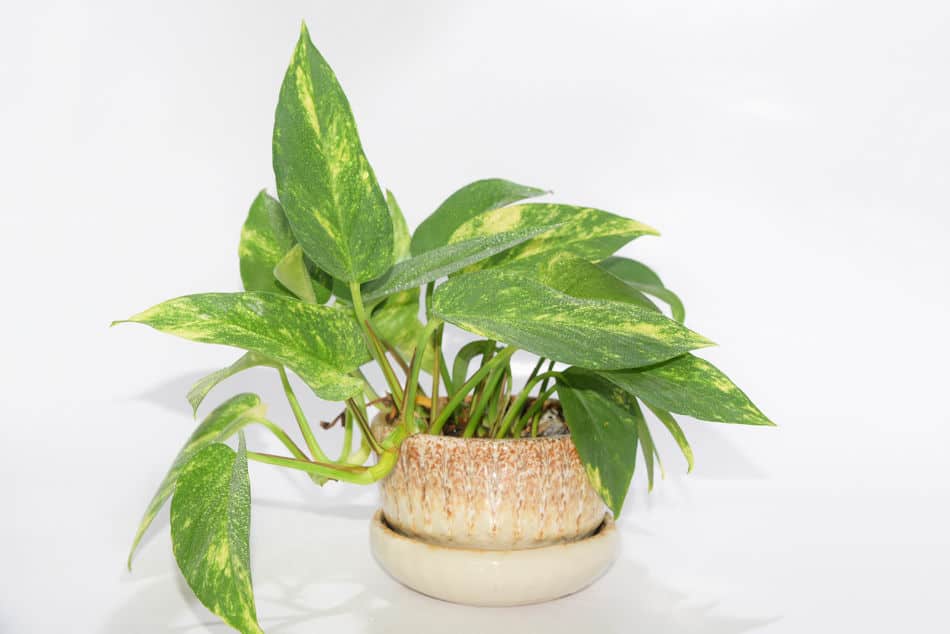
Pothos Plant Information
Types of Pothos Plant
Golden Pothos
The most common type of pothos, Devil’s Ivy, features heart-shaped green leaves with flecks of gold throughout. These are commonly found in garden stores and are extremely easy to grow. Golden pothos cleans the air of your home or office, as well as beautifies your space.
Neon Pothos
This exquisite type of pothos features bright neon lime green as it first grows, and a more mature color as it ages. Grow neon pothos if you like things that are more vibrant, and keep it in a well-lit area to take full advantage of its bright color.
Marble Queen Pothos
With its interwoven white and green “cheesecake” look, this variegated variety is absolutely stunning. Because it is heavy on the white colors, it lacks the chlorophyll that some versions contain, so you need to place this in better light so it will continue to flourish.
Jessenia Pothos
Another variegated version, this is much darker green than the Marble Queen variety, but will still grow slower than traditional Golden Pothos because of lack of chlorophyll. If you like variegated leaves, this is a stunner.
Propagation of Pothos Plant
Although a pothos plant is known as an indoor plant, they also grow outside in Zones 10-12 with temperatures from 70-90 degrees F. In the subtropical outdoors, pothos plants can spread 65 feet, and although they don’t grow quite this long indoors, they are perfect to grow in industrial spaces or offices where they can thrive on the fluorescent lights and wind their way among filing cabinets. Some gardeners even bring the pothos plants from indoors to outdoors as the weather changes.
There are two important ways to propagate the pothos plant. Begin on the node just below the leaf, and cut a 4-6 inch section, making sure to remove the leaf closest to the cut end. Place the cutting in a jar filled with water and your plant will grow roots in about a month. If you want it to eventually live in soil, transplant it soon after the roots have formed or it will be difficult to make the change later.
The second way to propagate begins just like the first, with a cutting near the node. This time, you can immediately plant it in a mixture of peat moss and perlite, and water it frugally. The roots will grow in about a month, and it will be a mature plant in 2-3 months.
Pests and Problems
As easy as the pothos plant is to grow, there are several problems that can arise with your pothos plant. Overwatering, for instance, causes root rot, which you can identify if you have brown or nonexistent roots. Overwatering, over fertilizing, or under watering can all cause the pothos’s leaves to become blackened, which will basically destroy the entire plant.
There are also several pests that will find their way to your pothos plant. The most typical insect pests are scales and mealybugs. Scales resemble bark-colored bumps on the stems, and can make your plant sticky with its large amount of honeydew produced. Mealybugs look like white, cottony masses in the axils of the leaves, and sometimes on the roots.
Although pesticides will work with these pests, the process can be so tedious that once you have an infestation of scales or mealybugs it just might be easier to discard the plant and begin with a fresh cutting from a healthy plant.
Questions About the Pothos Plant
Although pothos are by nature easy to grow, the answers to these questions will help you to troubleshoot any problems that arise and help your plants to thrive.
How to Propagate Pothos
Since pothos are primarily an indoor plant, there is no need to worry about planting them outside after the first frost in spring. Instead, take cuttings from a healthy plant and propagate it in water so that you can grow new pothos. It will take about a month to grow roots. The pathos can live in water for the rest of its life or can be transplanted into soil. If you prefer to plant your pothos in soil immediately you may do so, using a mixture of peat moss and perlite.
Are Pothos Plants Good for the Air
The pothos plant is not only lovely to look at and easy to care for it is also good at removing toxins and cleansing the air. Golden pothos does an especially good job of removing the toxins xylene, benzene, and formaldehyde from your home or office, and you will be breathing more easily if you invite these plants into your home.
Are Pothos Plants Poisonous
As much as the pothos plant can benefit the air in your home or office, they also come with a downside. Although pothos plants are rarely fatal, they are poisonous to adults, children, and animals. A good rule of thumb is to keep them away from children and animals. Because of the vine-like nature of pothos, make sure that any vines that hang down off of cabinets or counters are out of reach of children or pets.
Here is an article on How to Keep Cats Away From Plants that you may find helpful if you have cats.
Why is my Pothos Turning Yellow
Even though pothos are easy to grow, they can still on occasion turn yellow, which can be very disappointing to a gardener. The most common reason for a pothos plant turning yellow is that it is being overwatered. Pothos really do not need much water, and you can test the moisture in the soil to determine if you need to water it.
A secondary reason for turning yellow is lack of light. Although pothos can grow in low light, they do not always thrive like they would if put in indirect sunlight. Especially if you have a variegated version with a lot of white in it, the plant may not do well in a dark space because it needs more chlorophyll and therefore more green in its leaves in order to stay healthy.
How to Prune Pothos Plant
When it is time to prune your pothos, you can prune it as dramatically or moderately as you like. It can be pruned all the way back to its pot, or you can let it flow over cabinets and cupboards. When you do prune it, make sure to cut ¼ inch above each leaf for best results. If you have vines with no leaves on them, prune them entirely off because it is unlikely they will grow leaves again.
In Conclusion
If you want to try your hand at gardening, but you are not sure whether or not you have a green thumb, pothos will make the process quite easy on you. With its heart-shaped leaves and propensity to climb, it is very easy to take care of and enjoy and will make a great addition to your home or office.

